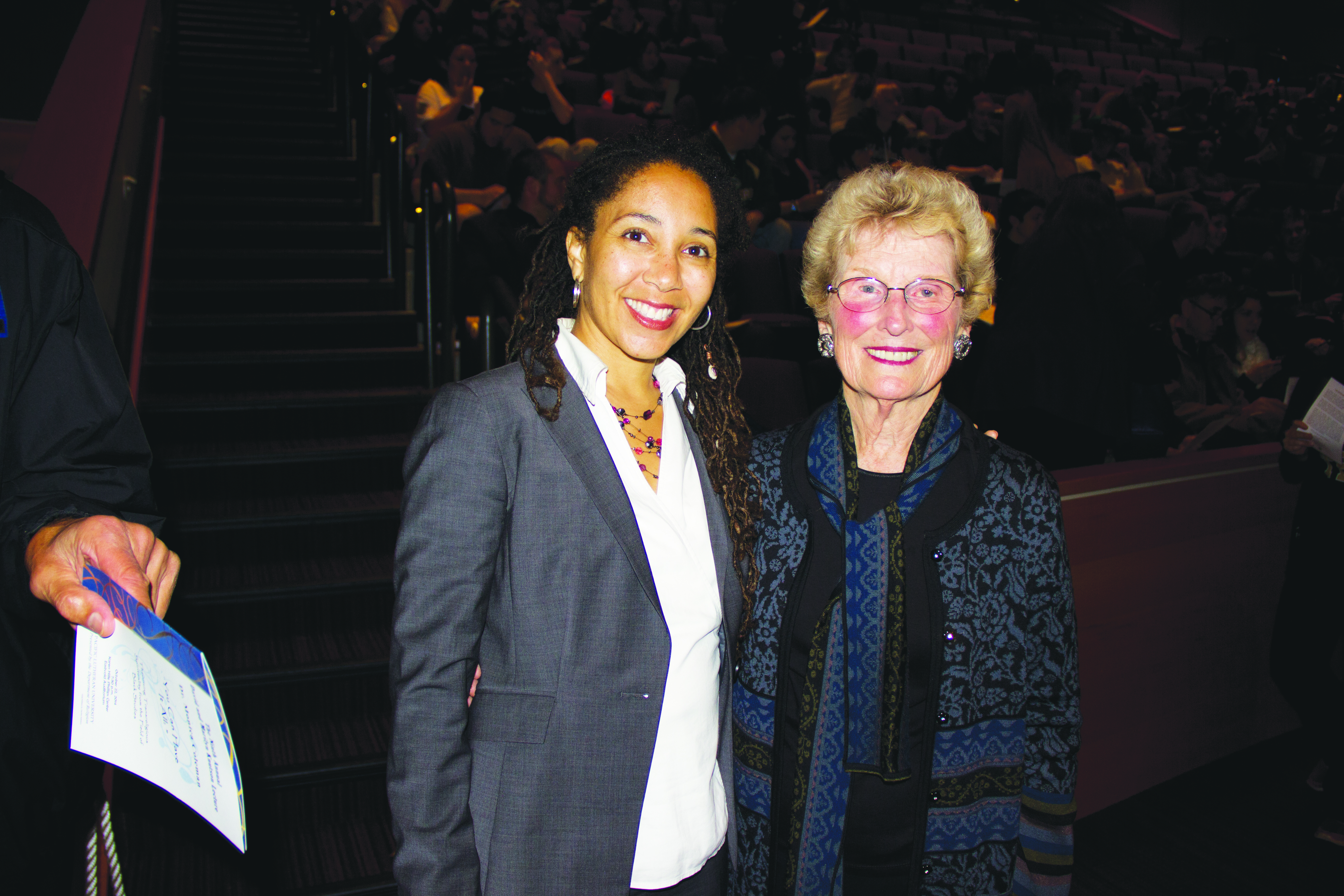by David Mair, Staff Writer
On a rainy Oct. 22 at 7:30 p.m., the Rev. Monica Coleman gave a lecture titled “You Can Have it All” in the Karen Hille Phillips Center. It was presented by the department of religion.
It marked the ninth annual lecture as part of the David and Marilyn Knutson Lectureship.

Photo Credit: David Mair
The Knutsons are Pacific Lutheran University alumni and, through their lectureship, bring renowned scholars to address questions and challenges of today through a living faith tradition.
Coleman is an ordained minister of the African Methodist Episcopal Church. She’s an activist, scholar and wrote a book titled “Not Alone” about depression. She is also a professor at Claremont University.
Her lecture revolved around the concept of transreligous spirituality. It is the idea that one can be of all the religions at the same time.
To explain the meaning of this idea, Coleman used the Rev. Michael Bernard Beckwith as an example.
Beckwith is the leader and creator of the Agape Church, a church where every religion is practiced simultaneously. More than 10,000 people attend regularly. It was important to distinguish that religion has concrete dogma, while spirituality is a direct realization of reality.
Though there are many different religions, they can have many parallels. In all religions, both love and intelligence exist.
Every religion has the same “ultimate” or “god,” same destination and same teaching of principles, according to Beckwith. Even religions with multiple gods all stem from the same ultimate power, Beckwith argues. Often, it is because religions are partial that these similarities are overlooked.
It can be noted that religions will fall into three categories of states of mind: exclusivism, inclusivism and pluralism.
Exclusivism, where the followers of that religion believe theirs is the right and only acceptable one; inclusivism in which followers acknowledge that other religions are okay, but theirs is still better; and pluralism, where followers believe all religions have the right idea, and that is transreligous spirituality.
To solidify the idea of transreligous spirituality, Coleman used an elephant metaphor and urged the audience to imagine many people with their eyes closed and touching a certain part of the elephant. The elephant is massive but each person only gets to touch one part. Due to the massive size of the elephant, the people are unable to tell they are all holding onto the same animal, which they thought was all separate things.
Before concluding, the Rev. Coleman brought in her personal learning of black studies with a term from W.E.B. Du Bois, “double consciousness.” Du Bois coined the term to refer to the challenge of having an African heritage; while at the same time having a European upbringing and education.
She connects this term to how people view themselves in society. Whether through race, thoughts or ideals, it is necessary for people to possess a dogged strength to navigate from being torn in different directions.
“It [double consciousness] relates to us because there’s an internal view of self and then the world’s view,” junior Denae McGaha said. “At PLU, there’s a journey of finding who you are, and PLU gives the confidence to reject what the world tells you to be.”
By recognizing how people look at religion and equalizing every religion, having it all is realistically achievable.

























